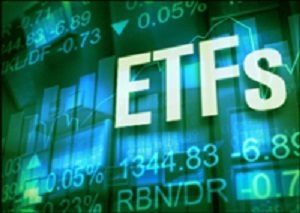 If you want to include the best ETF investments in your portfolio, then it’s important to consider a variety of components. That’s because all Exchange-Traded Funds aren’t created equal
If you want to include the best ETF investments in your portfolio, then it’s important to consider a variety of components. That’s because all Exchange-Traded Funds aren’t created equal
ETFs are one of the most popular and most benign investing innovations of our time: and the best ETF investments can be great low-fee ways to hold shares in multiple companies with a single investment.
The best ETFs practice “passive” fund management
The best ETFs practice “passive” fund management, in contrast to the “active” management that conventional mutual funds or some new ETFs provide at much higher costs. Traditional ETFs stick with this passive management: they follow the lead of the sponsor of the index (for example, Standard & Poors).
Sponsors of stock indexes do from time to time change the stocks that make up the index, but generally only when the market weighting of stocks change. They don’t attempt to pick and choose which stocks they think have the best prospects.
This traditional, passive style also keeps turnover very low, and that in turn keeps trading costs for your ETF investments down.
We think you should stick with “traditional” ETFs.
The best ETF investments have lower MERs
The MERs (Management Expense Ratios) are generally much lower on ETFs than on conventional mutual funds. That’s because most ETFs take a much simpler approach to investing. Instead of actively managing their portfolios, ETF providers invest so as to mirror the holdings and performance of a particular stock-market index.
Using “betas” to pick ETFs has a number of limitations
A negative beta indicates that a stock or ETF tends to move in the opposite direction from the general market. That is, the stock or ETF price declines when the overall market is rising, or rises when the overall market is declining.
As a measure of risk, beta has a number of limitations. It is based on past data, so its use in predicting the future assumes that the underlying company being charted remains unchanged. For example, it assumes that no major acquisitions or divestitures, or other company-changing events take place. In reality, a stock’s beta can rise or fall over a period of years, or change abruptly.
Beta’s can mislead you in other ways. Gold stocks have an average beta of 0.42 when you use the S&P 500 Index as their benchmark index. Such a low beta indicates that gold funds are safe investments, like utilities. But they are not, of course, and that’s because their performance and returns have relatively little to do with the performance and returns of the S&P 500 Index. They rise and fall with gold prices.
Institutional investors are always looking for so-called “quantitative” measures like beta that can be calculated automatically by a computer program. Beta makes a broad statement about a stock’s history of volatility, but it doesn’t say much if anything about its prospects or its appeal as an investment. To assess a company’s suitability for your portfolio, you are better off using other, more reliable measures of safety, such as steady earnings and cash flow, low debt and a secure hold on a growing market.
Our favorite aggressive ETFs invest in well-established small companies that dominate their markets
You should avoid aggressive growth funds that mainly invest in stocks of companies that hold a lot of concept stocks, or that do a lot of trading, or that delve into options or futures trading.
These aggressive growth funds and stocks are only suitable for investors who can accept higher risk.
Our aggressive selections tend to be more highly leveraged and more volatile than our conservative recommendations, and they can give you bigger gains and bigger losses. This may be due to financial leverage, or to the risk in their industry or particular situation, or our estimation of upcoming changes in that risk. Keep in mind, though, that these or any aggressive investments should make up no more than, say, a third of most investor portfolios.
Ultimately, the percentage of your portfolio that should be held in either conservative or aggressive investments depends on your personal circumstances. An investor with a longer time horizon or without the need for current income from a portfolio can invest some money in aggressive ETFs or stocks.
6 things you should consider while looking for the best ETF investments:
- ETFs can be volatile, even with the diversification they offer.
- Know how broad the ETF is, so you can determine its volatility. The broader the ETF, the less volatility it may have. A sector-based ETF, like one that tracks resource stocks, may be more volatile.
- Know the economic stability of countries when investing in international ETFs. It’s also worth mentioning that foreign leaders may not be your ally when it comes to passing legislation that can affect your investments
- Know the liquidity of ETFs you invest in.
- Determine if the ETFs you buy will include capital gains distributions.
- Consider buying ETFs in a lump sum rather than periodic small amounts to cut down on brokerage fees.
Are you holding any of the best ETF investments described above? If so, how have they performed for you? Share your experience with us in the comments.
 Pat McKeough has been one of Canada’s most respected investment advisors for over three decades. He is the founder and senior editor of TSI Network and the founder of Successful Investor Wealth Management. He is also the author of several acclaimed investment books. This blog originally ran in October 2016 and is republished here with permission.
Pat McKeough has been one of Canada’s most respected investment advisors for over three decades. He is the founder and senior editor of TSI Network and the founder of Successful Investor Wealth Management. He is also the author of several acclaimed investment books. This blog originally ran in October 2016 and is republished here with permission.

